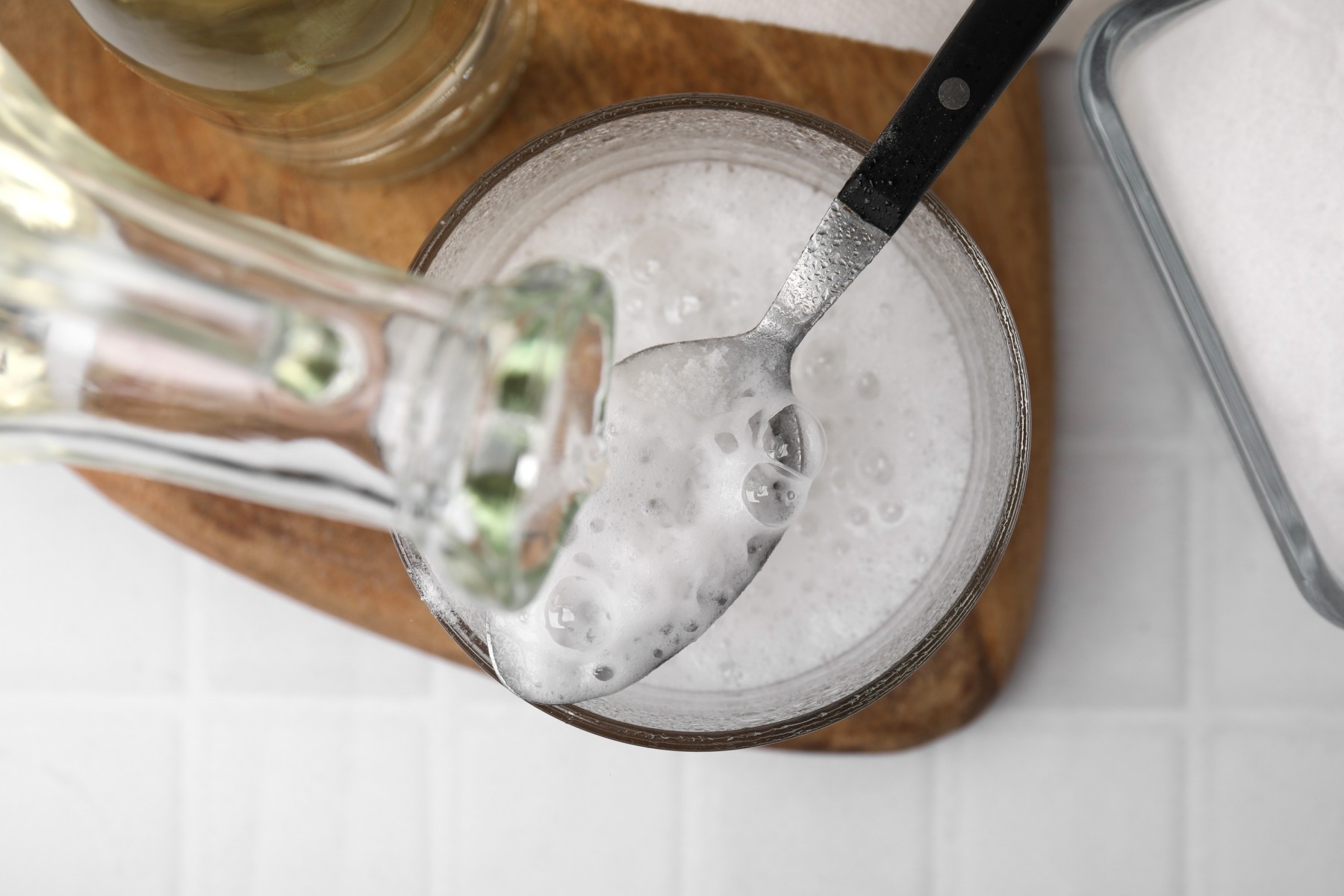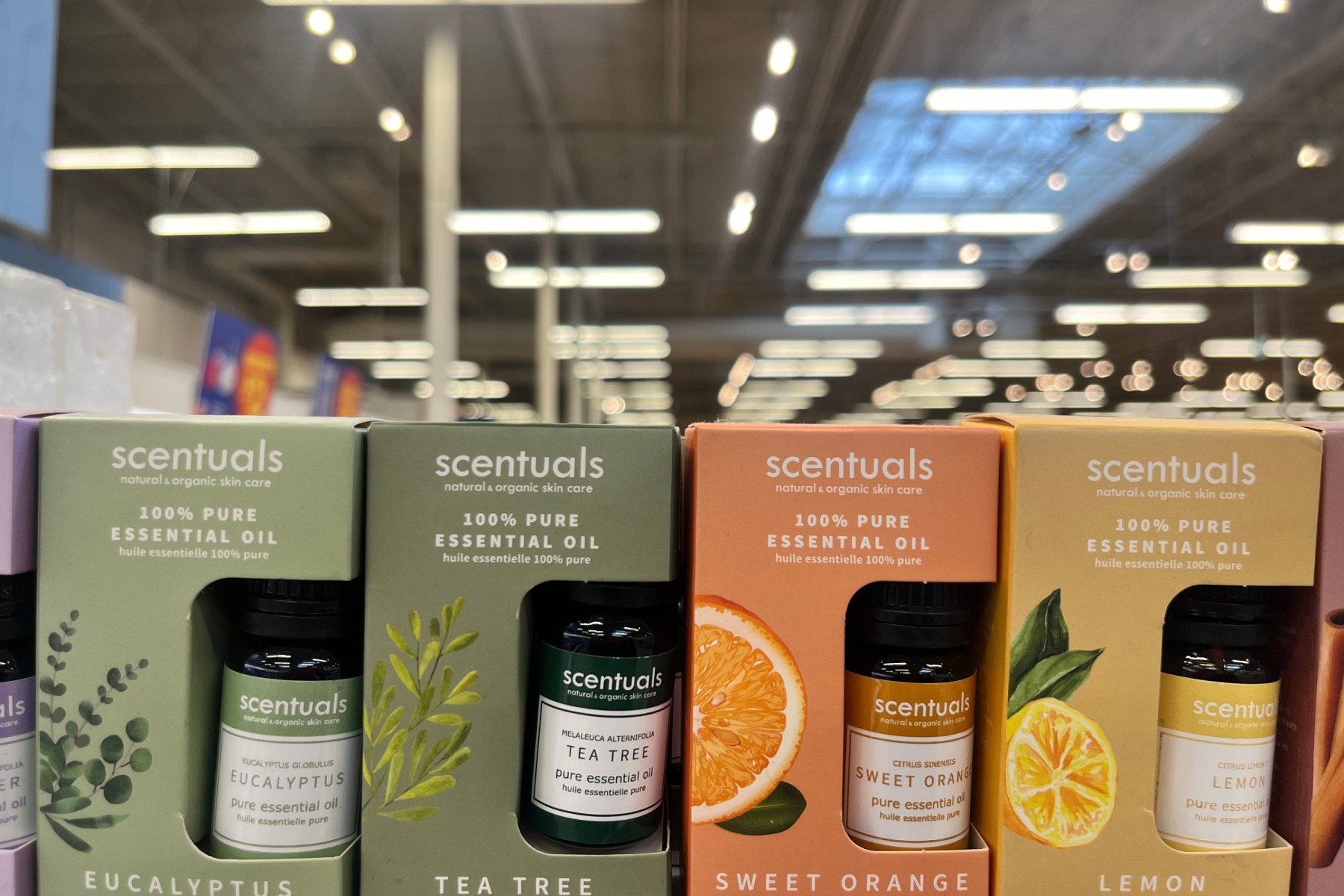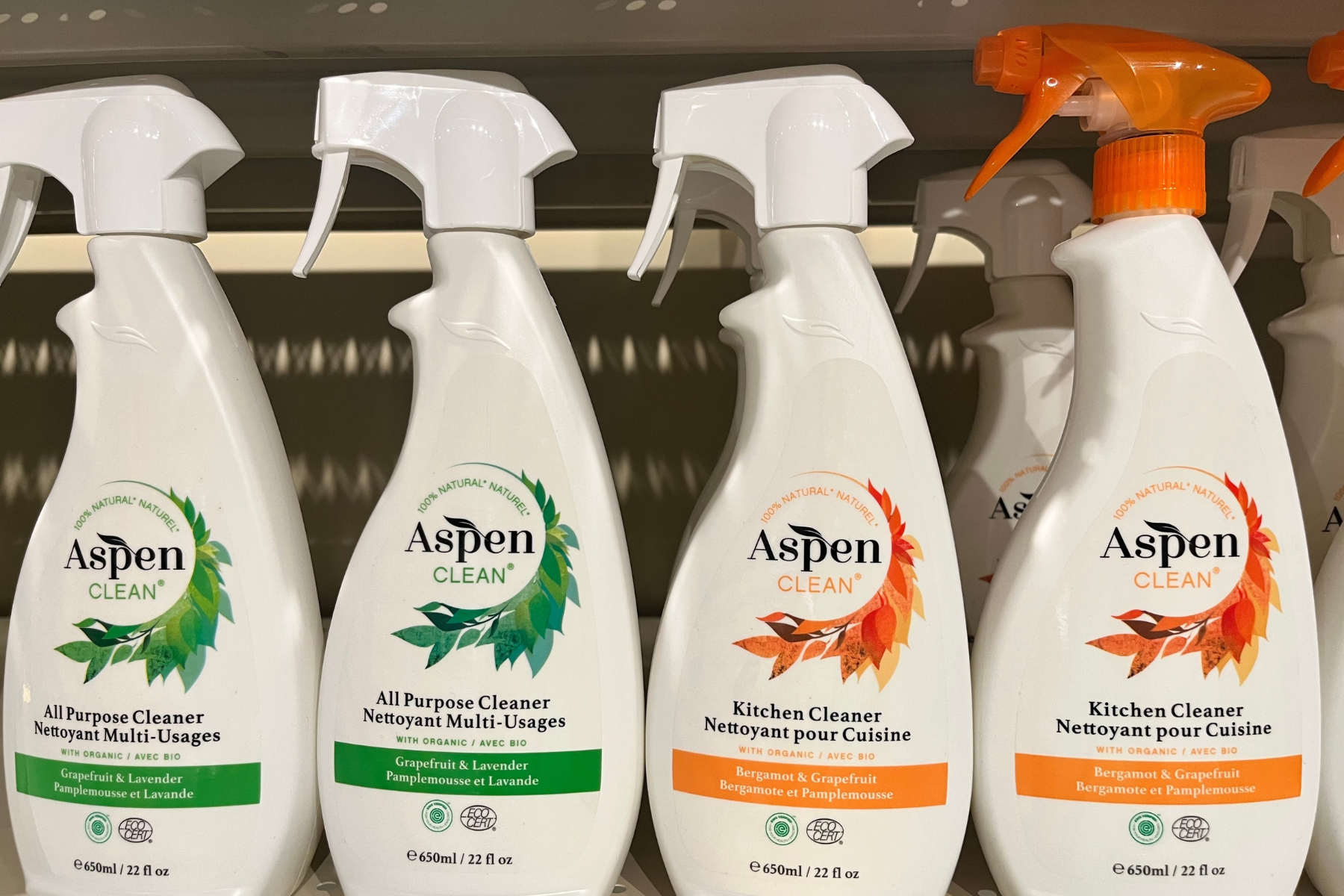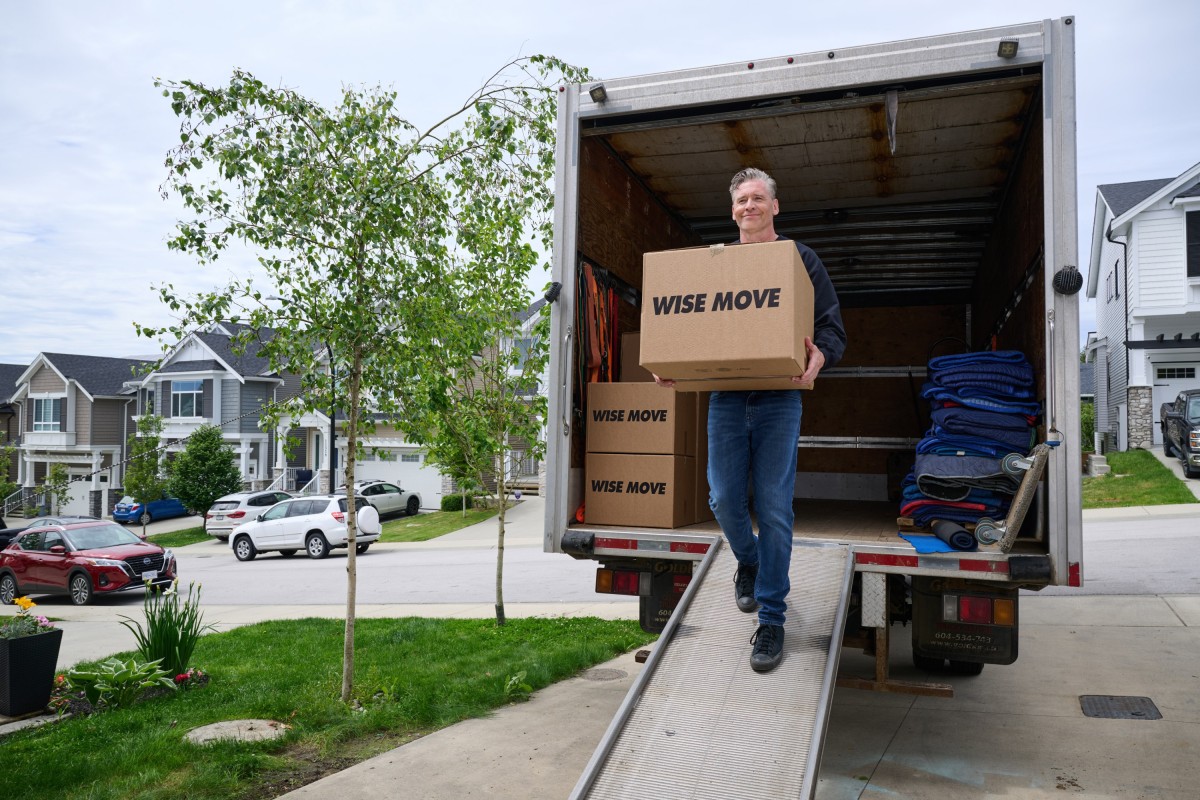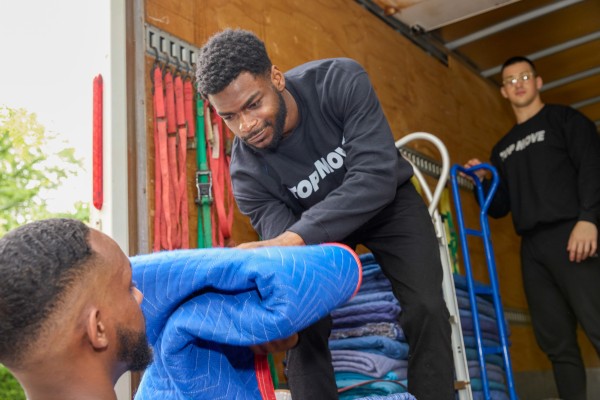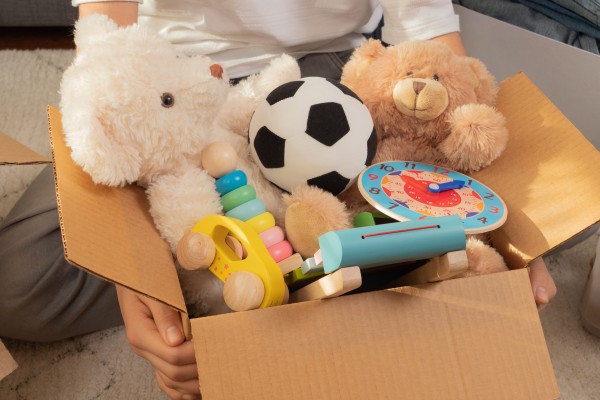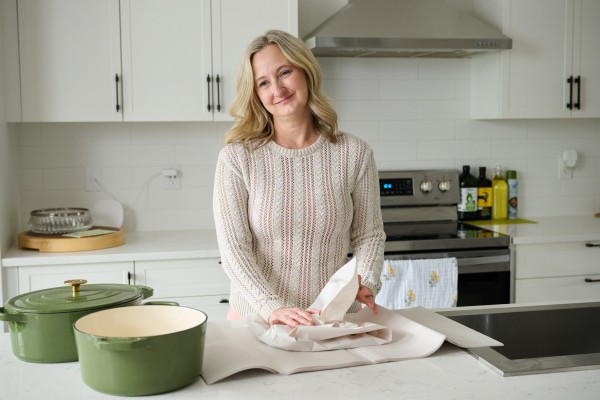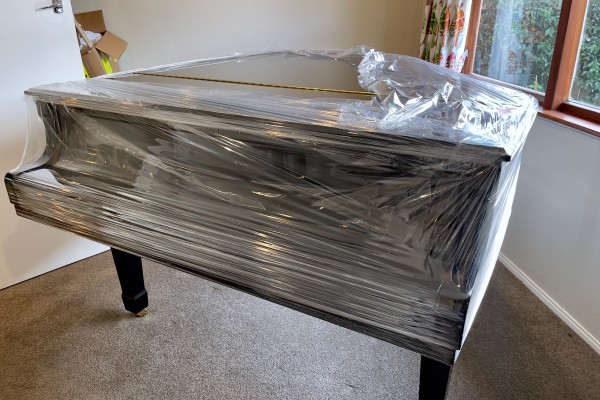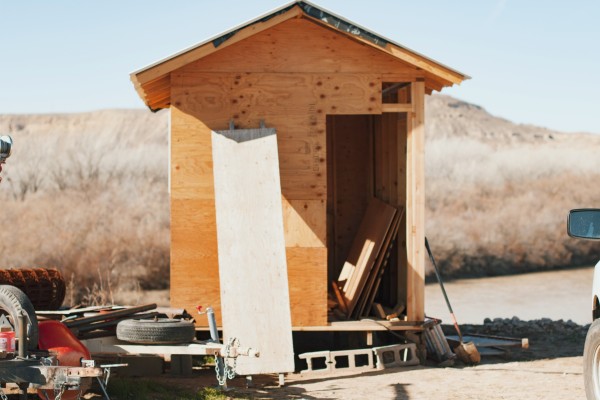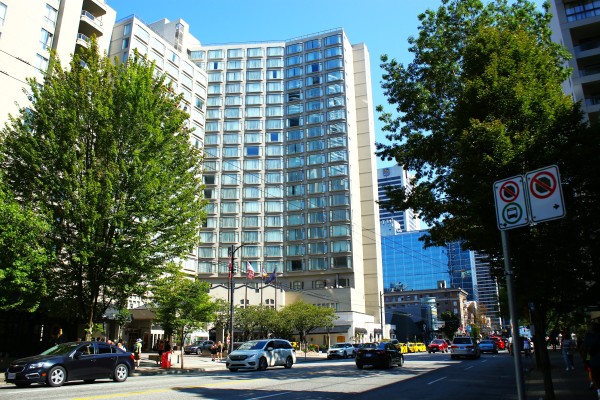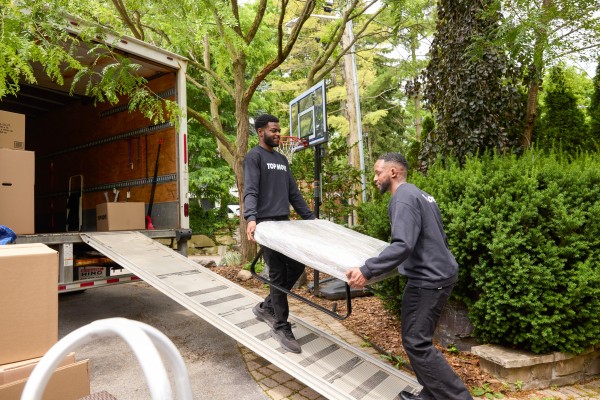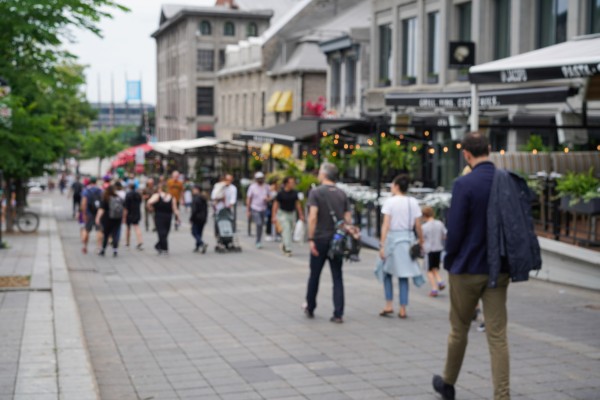Eco-friendly guide to your move-out clean in Canada

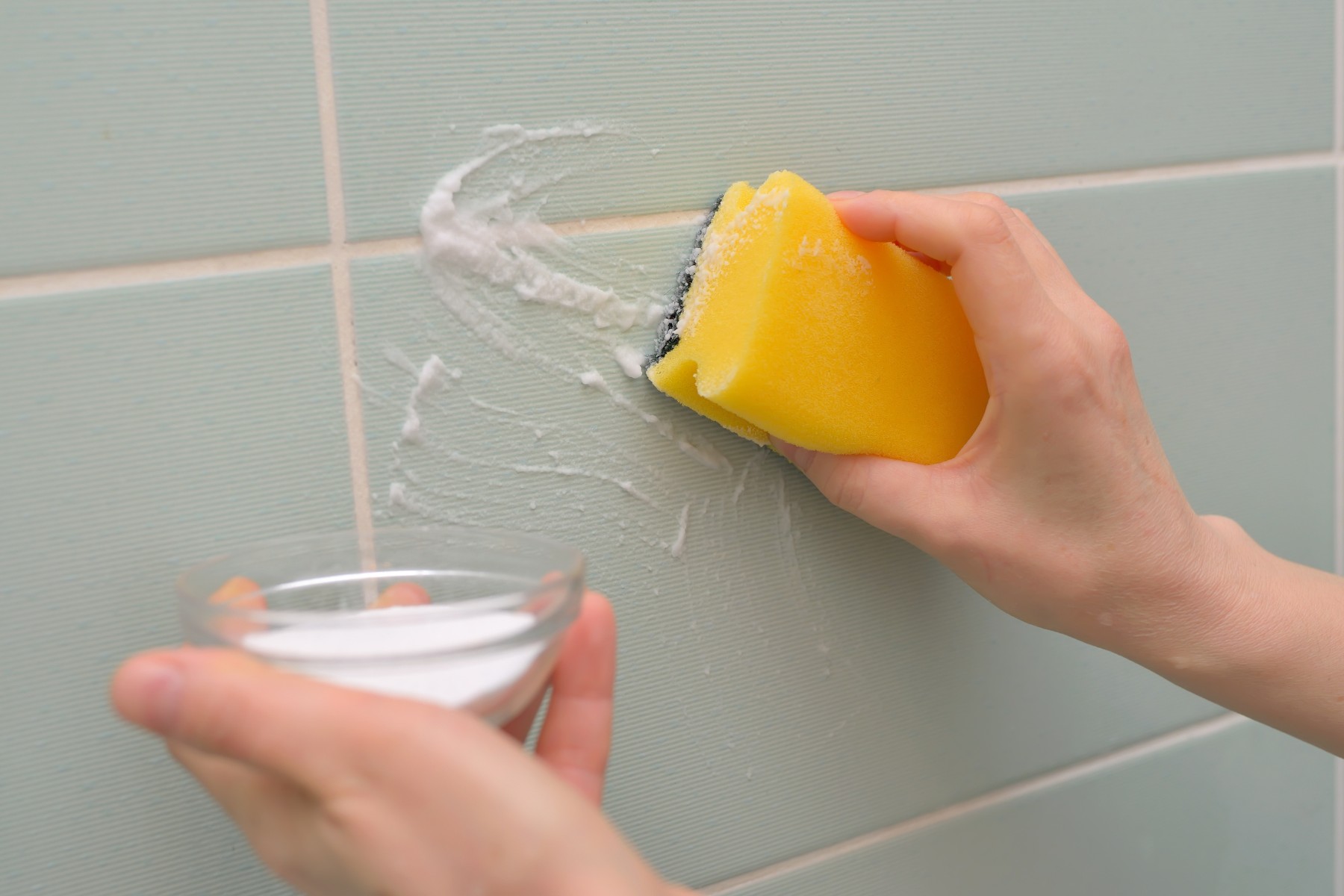
A thorough move-out clean is a necessary step in the moving process, especially if you’re selling or hoping to get your full deposit back. Your old place should be as clean as you'd expect your new home to be, right?
Canada, like many parts of the world, faces a waste and chemical crisis from the misuse of resources and products. This is especially the case for toxic chemicals found in commercial cleaning products.
So, it’s up to us to reduce their impact on the environment and our health, and going green with move-out clean is the perfect opportunity to do so.
Use this guide to ensure your move-out clean is sustainable and eco-friendly while leaving the space spotless and fresh for the next occupants. It covers decluttering tips, DIY non-toxic cleaning recipes, the best eco-friendly cleaning products in Canada, where to buy them, and sustainable cleaning tips.
Sustainable practices before you start cleaning
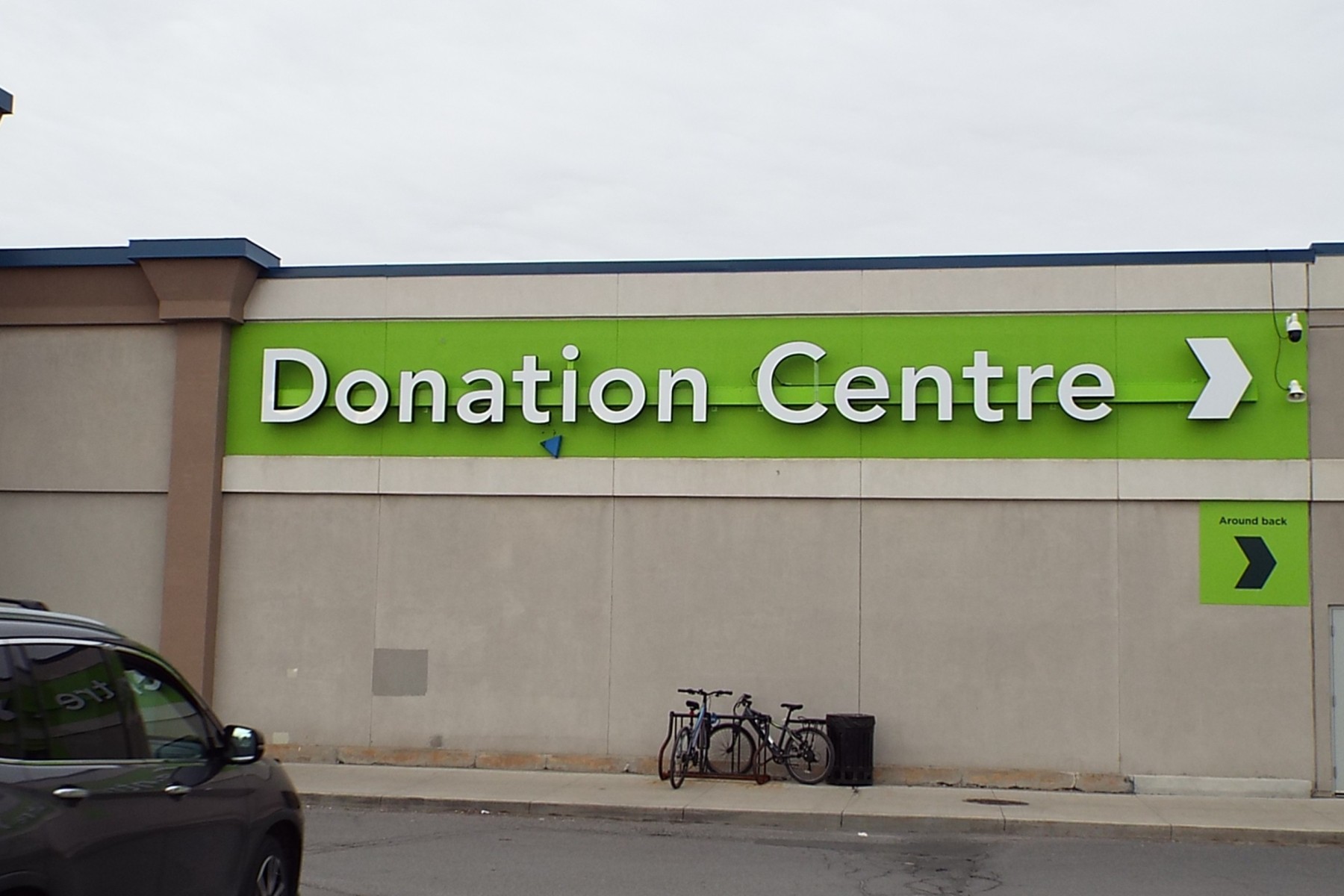 There is a certain amount of preparation that can help to simplify your move-out clean.
There is a certain amount of preparation that can help to simplify your move-out clean.
Declutter responsibly
The stuff you have to work around, the easier and faster the move-out clean will be:
-
Downsize your possessions by donating household items that are in good condition. These include furniture, clothing, tools and appliances. Find local charities and shelters in your town or city where you can donate these items.
-
Recycle electronics appropriately. If you don’t know where to do this in your city/town, check out the Electronic Products Recycling Association (ERPA) website for guidance.
-
Hazardous items can't be thrown away in your regular garbage, including paint, batteries, cleaners, and lightbulbs. You'll need to take these items to the designated drop-off locations. Your municipality may also have special collection events to collect hazardous waste.
Make use of what you have
Here are some items you may have around the house that you can use towards your cleaning mission:
-
Old cotton clothing and towels to cut up and use as rags.
-
Newspaper.
-
Old cleaning supplies. I'll use these up before buying new stuff.
-
Vinegar, baking soda, and essential oils.
-
Plastic buckets.
How to make your own eco-friendly cleaning products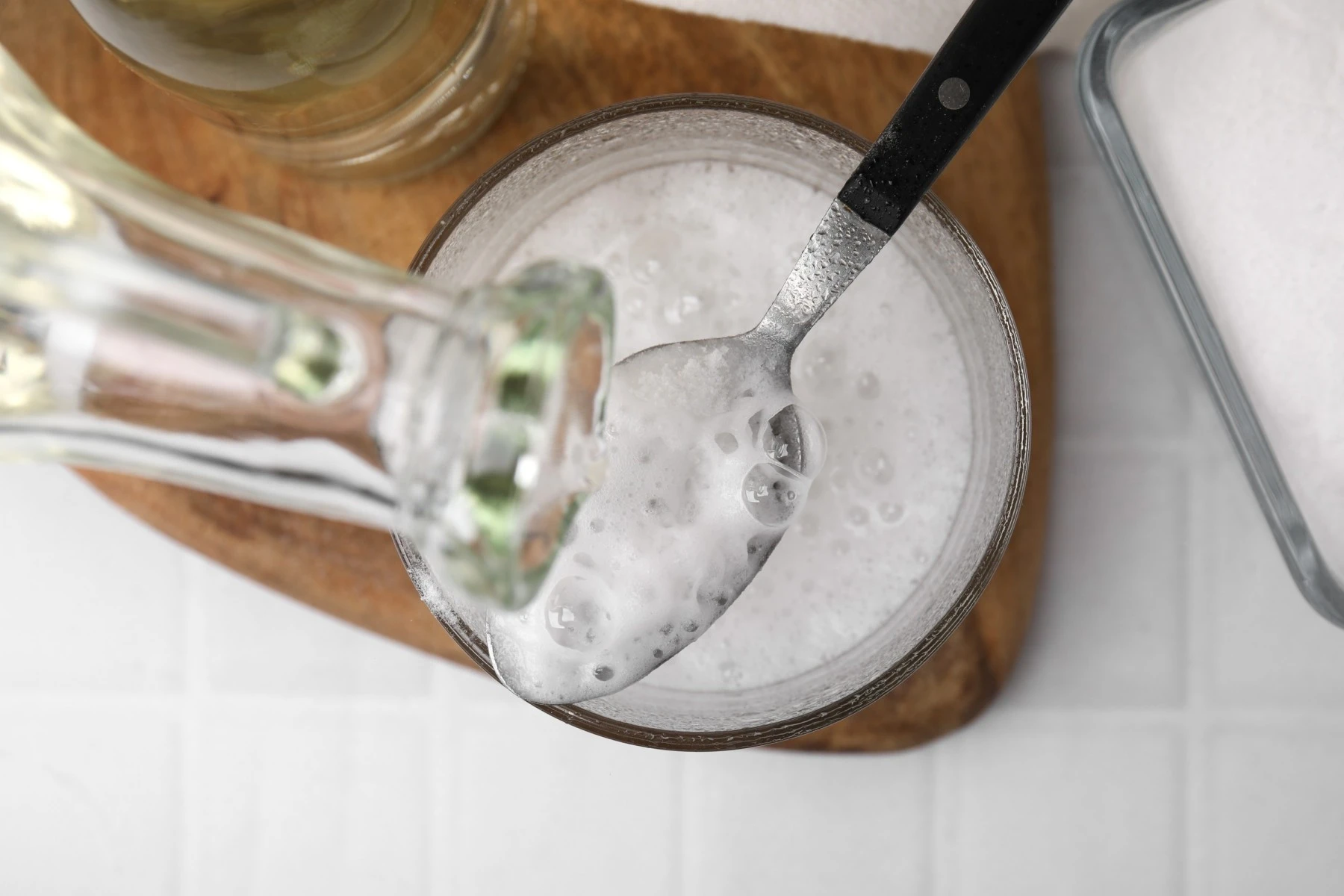
There are several different DIY cleaning recipes which are simple and affordable. We’ve put together some easy recipes for you to make your own cleaning products. You'll see that all the recipes are from common household ingredients with optional essential oils.
There's also a list of antibacterial and antifungal essential oils to include in your recipes. Best of all, the oils will make your whole move-out cleaning process smell amazing.
All-Purpose Cleaner
Use for: countertops, sinks, light switches, doorknobs
- 1 cup white vinegar
- 1 cup water
- 15 drops of essential oils (see below)
Combine ingredients in a spray bottle and shake well. Spray on surfaces and wipe with a cloth. Do not use on natural stone like granite or marble.
Glass and Mirror Cleaner
Use for: mirrors, windows, glass tables
- 1/2 cup white vinegar
- 1/2 cup water
- 1 tablespoon cornstarch
Combine in a spray bottle and shake before each use. Spray on glass and wipe with a newspaper or a lint-free cloth for a streak-free finish.
Scrubbing Paste
Use for: bathtubs, sinks, stovetops, grout
- 1/2 cup baking soda
- 2 to 3 tablespoons water (add slowly to form a paste)
Apply with a sponge or brush. Scrub the surface, then rinse clean.
Toilet Bowl Cleaner
- 1/2 cup baking soda
- 1/4 cup white vinegar
Sprinkle baking soda into the toilet bowl. Pour vinegar over it and let it fizz for 10 to 15 minutes. Scrub with a toilet brush and flush.
Fabric and Room Freshening Spray
Use for: furniture, curtains, linens, and as a light room spray
- 1 cup water
- 1 tablespoon baking soda
- 10 drops of essential oils
Mix in a spray bottle and shake well before each use. Spray lightly onto fabrics or into the air.
Using essential oils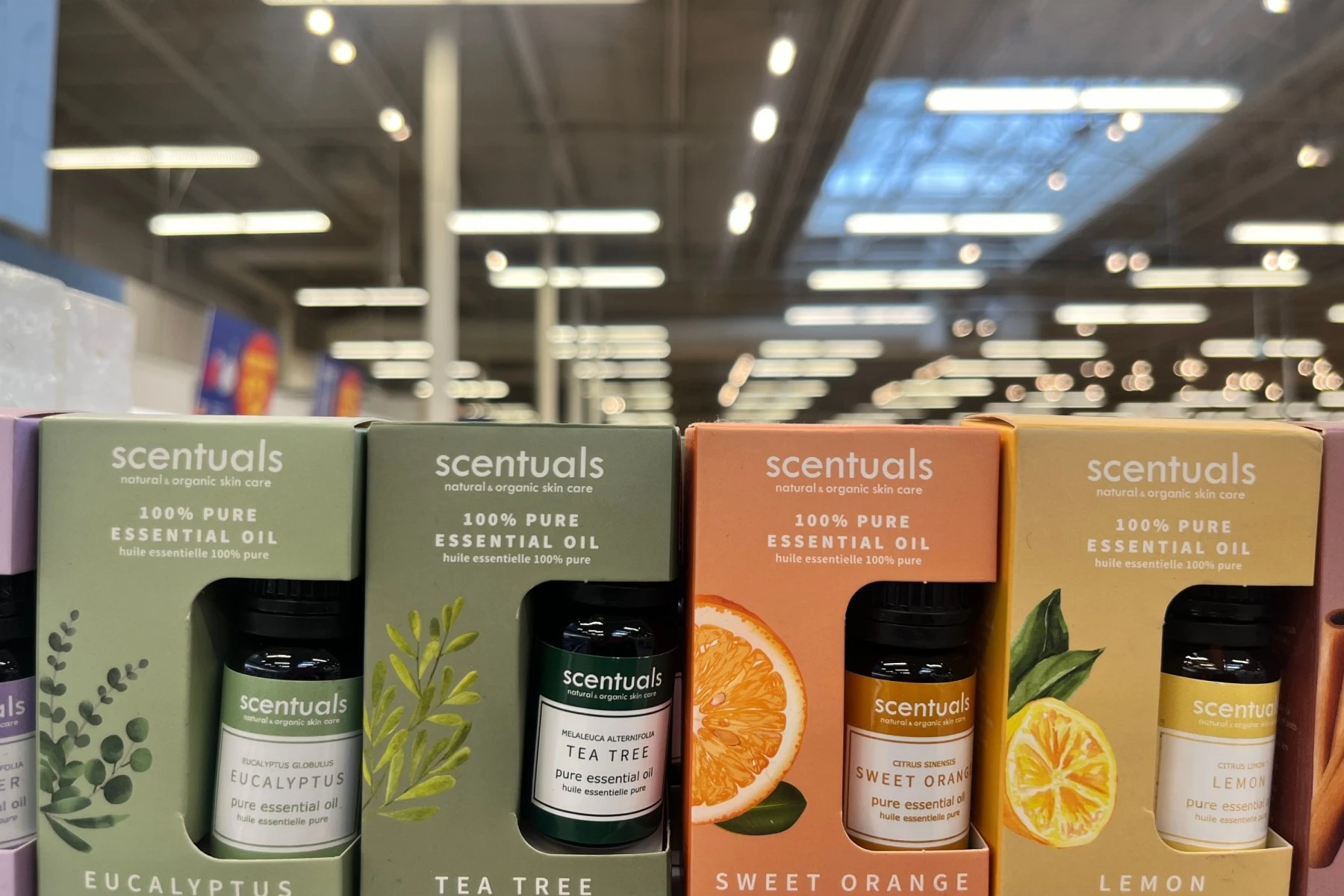
Many essential oils smell incredible and have the added benefit of being antibacterial and antifungal. These can be added to almost every DIY cleaning product recipe.
When using essential oils, it's important to use ones that are considered sustainable. Make sure that when extracting the essential oil, the longevity of the plant is preserved. Check that they've been produced to protect the environment, as well as support ethical labour practices.
Essential oils contain volatile compounds and must be handled with care. Only a few drops are needed per recipe. Store essential oils in dark glass bottles away from heat and sunlight, and keep them out of reach of children and pets.
Before using a new oil, check for any allergies or sensitivities. Never apply essential oils directly to your skin without proper dilution.
Here is a list of oils that are both effective and sustainable:
Antibacterial essential oils
-
Tea Tree
-
Eucalyptus
-
Lavender
-
Lemongrass
-
Peppermint
-
Rosemary
-
Sweet Orange
-
Thyme (cultivated varieties)
-
Lemon
-
Clove
Antifungal essential oils
-
Tea Tree
-
Lemongrass
-
Lavender
-
Eucalyptus
-
Peppermint
-
Thyme
-
Palmarosa
-
Sweet Orange
-
Geranium
-
Clove
Best eco-friendly cleaning products in Canada for move-out cleans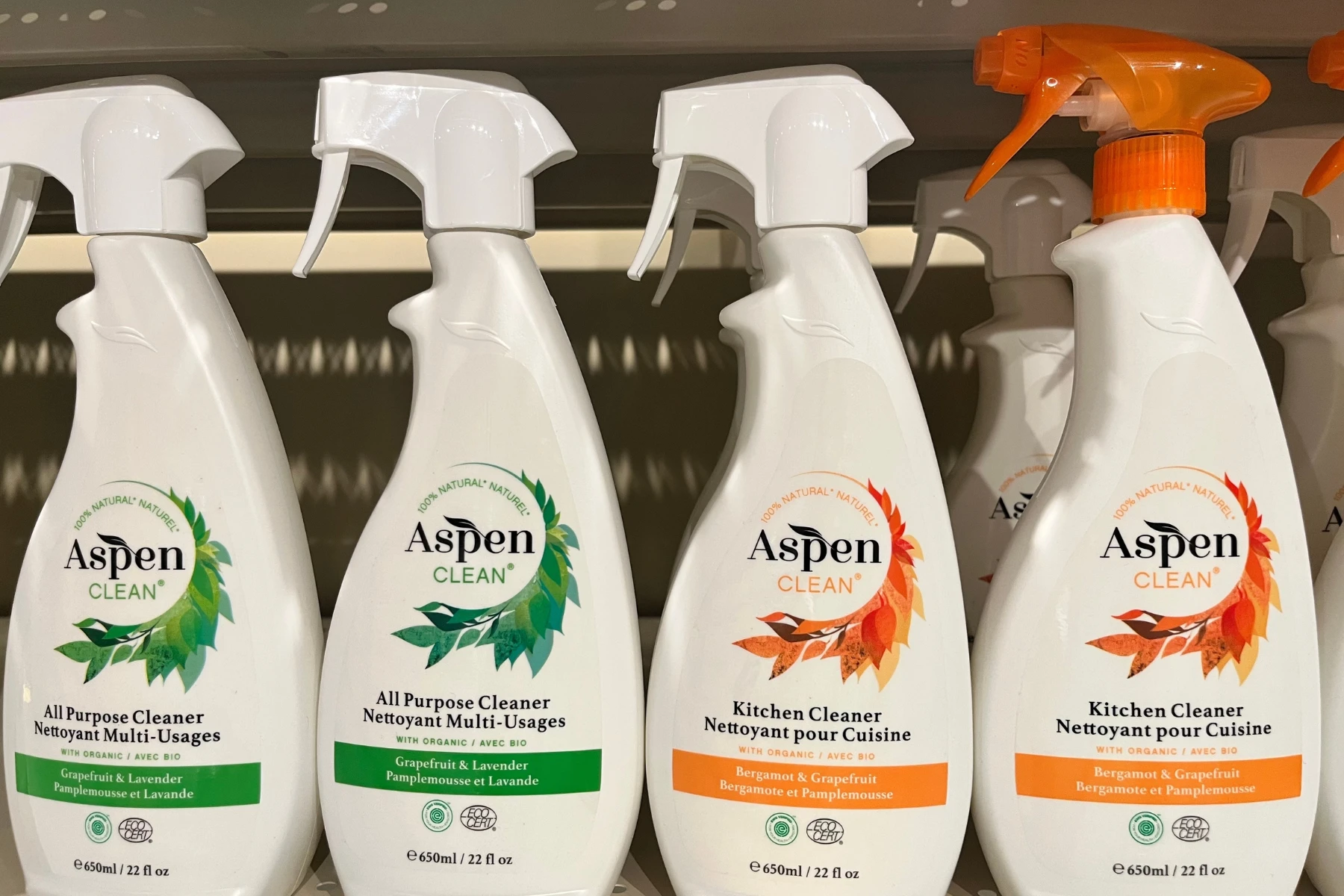
If you need the convenience of purchasing cleaning products, you are in luck. Hundreds of household products in Canada are safe to use and won't be harmful to the environment.
Here are some eco-friendly cleaning products in Canada that are effective, widely available, and safe for your home and the environment:
AspenClean
AspenClean is a Vancouver-based Canadian brand offering ECOCERT-certified, cruelty-free, and vegan cleaning products made with 100% natural and biodegradable ingredients. Their all-purpose cleaners, bathroom sprays, and floor cleaners use essential oils and plant-based formulas, making them effective while keeping your indoor air clean.
Nature Clean
Nature Clean is a family-owned Canadian company, proudly chemical-free since 1963. Their product line includes all-purpose cleaners, dish soaps, and laundry detergents, all chemical-free, biodegradable, without phosphates, synthetic fragrances, or dyes.
Tru Earth Multi-Surface Cleaner Eco-Strips
Tru Earth, known for its laundry eco-strips, also offers plastic-free multi-surface cleaner strips that dissolve in water to create an effective cleaner without harsh chemicals. These strips are lightweight, zero-waste, and convenient for move-out cleans.
What to look for when buying eco-friendly cleaning products
- Plant-based or biodegradable formulas.
- Refillable or recyclable packaging.
- Certifications like ECOLOGO, ECOCERT, or Green Seal.
- Transparent ingredient labels.
Harmful ingredients to avoid
Here are some common cleaning ingredients that are harmful to people, plants, animals and the planet:
-
Bleach
-
Ammonia
-
Synthetic fragrances
-
Phosphates
Where to buy sustainable cleaning products
The following databases list brands which are deemed safe and sustainable. This makes it even easier to source your products with the planet’s wellbeing in mind:
-
GreenUP
-
Greenguard
-
Green Seal
-
Household Products Database
-
CleanHub
Sustainable cleaning tips (room-by-room guide)
Kitchen
-
Use baking soda for the oven and fridge.
-
Degrease stovetops with lemon and vinegar.
-
For tough oven and stovetop grease, make a paste of oil and vinegar and let it sit on the surface for 10 minutes before scrubbing.
-
Compost any leftover food, and recycle containers properly, or save them for future food storage.
Bathrooms
-
Use vinegar and essential oils for disinfecting.
-
Clean mirrors and glass with a newspaper and vinegar solution.
-
Scrub grout with a baking soda paste and an old toothbrush.
Living Areas & Bedrooms
-
Dust with repurposed fabric cloths.
-
Vacuum or sweep with reusable filter vacuums or brooms (no Swiffer sheets).
-
Donate or recycle unwanted textiles.
Floors
-
Mop with warm water and vinegar solution instead of disposable pads or harsh cleaners.
Final sustainable practices before the move
After you've cleaned, there are a couple of things to consider to keep things as sustainable as possible:
-
Air out the space naturally: Open windows instead of using chemical air fresheners. You can also use essential oil diffusers.
-
Eco-friendly disposal: Arrange a final run to local recycling centres or compost facilities.
-
Line garbage cans with biodegradable bags: This is a gentle way to send a message to future tenants or owners regarding sustainable choices.
If you're a landlord who's big on sustainability, consider updating your cleaning checklist to make it eco-friendly. You can even provide green cleaning kits to tenants, including natural cleaning supplies like bamboo brushes and reusable cloths.
Make it a wise, sustainable move
The biggest benefit of making sustainable lifestyle choices is that it models mindfulness and respect. There are so many ways to adjust your daily activities to align with the health of the planet, your community, and your own body.
Small changes, such as using non-toxic cleaners or reducing single-use items, can make a big difference. Why not make it a challenge? You can even make your entire move sustainable.
Booking your move with Wise Move is a simple step that helps you reduce your environmental impact by matching you with vetted, local Canadian moving companies who can combine shipments and reduce empty trips on the road. This approach helps lower fuel usage and emissions while supporting local businesses in your community.
What do our customers say?


